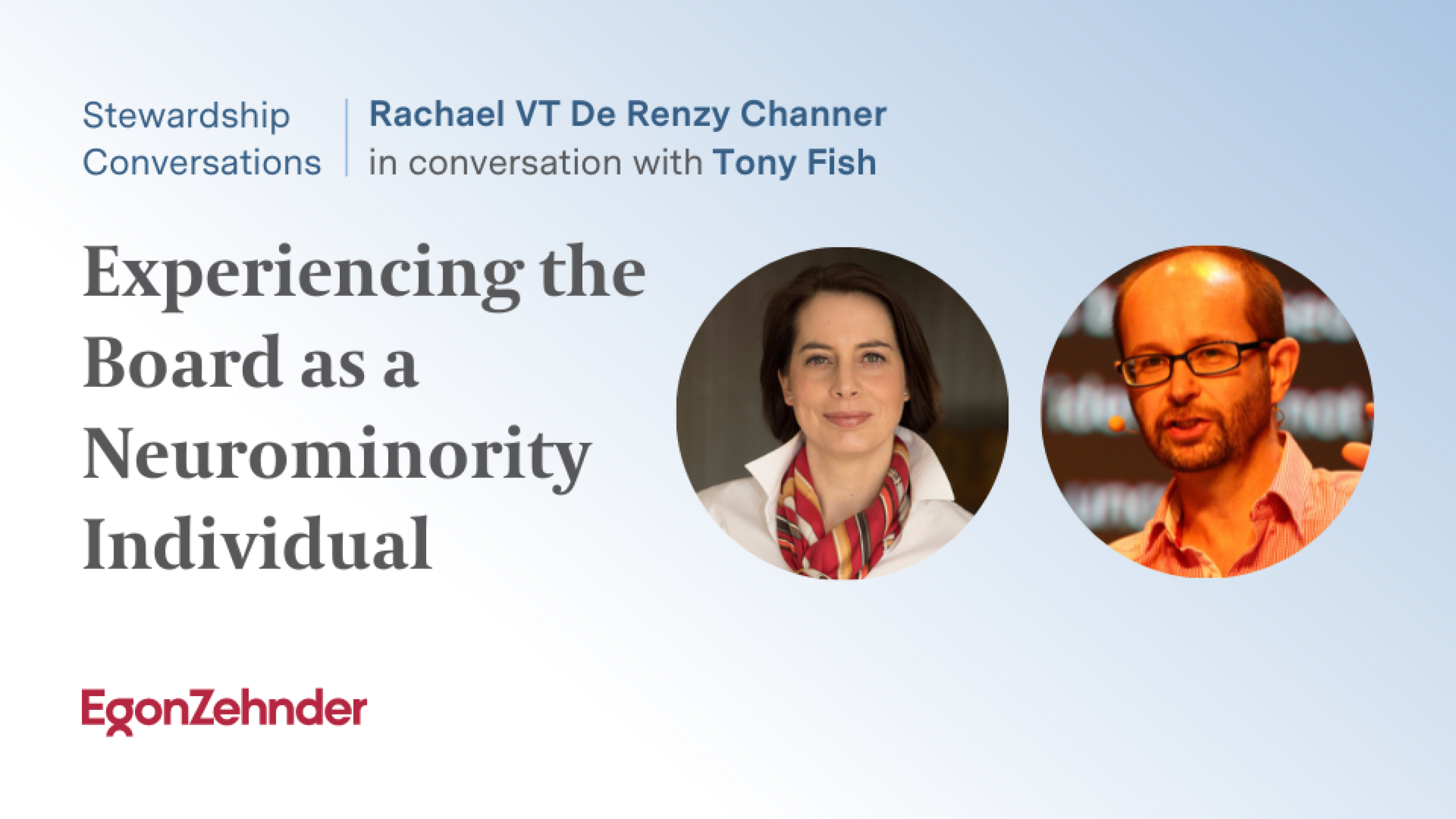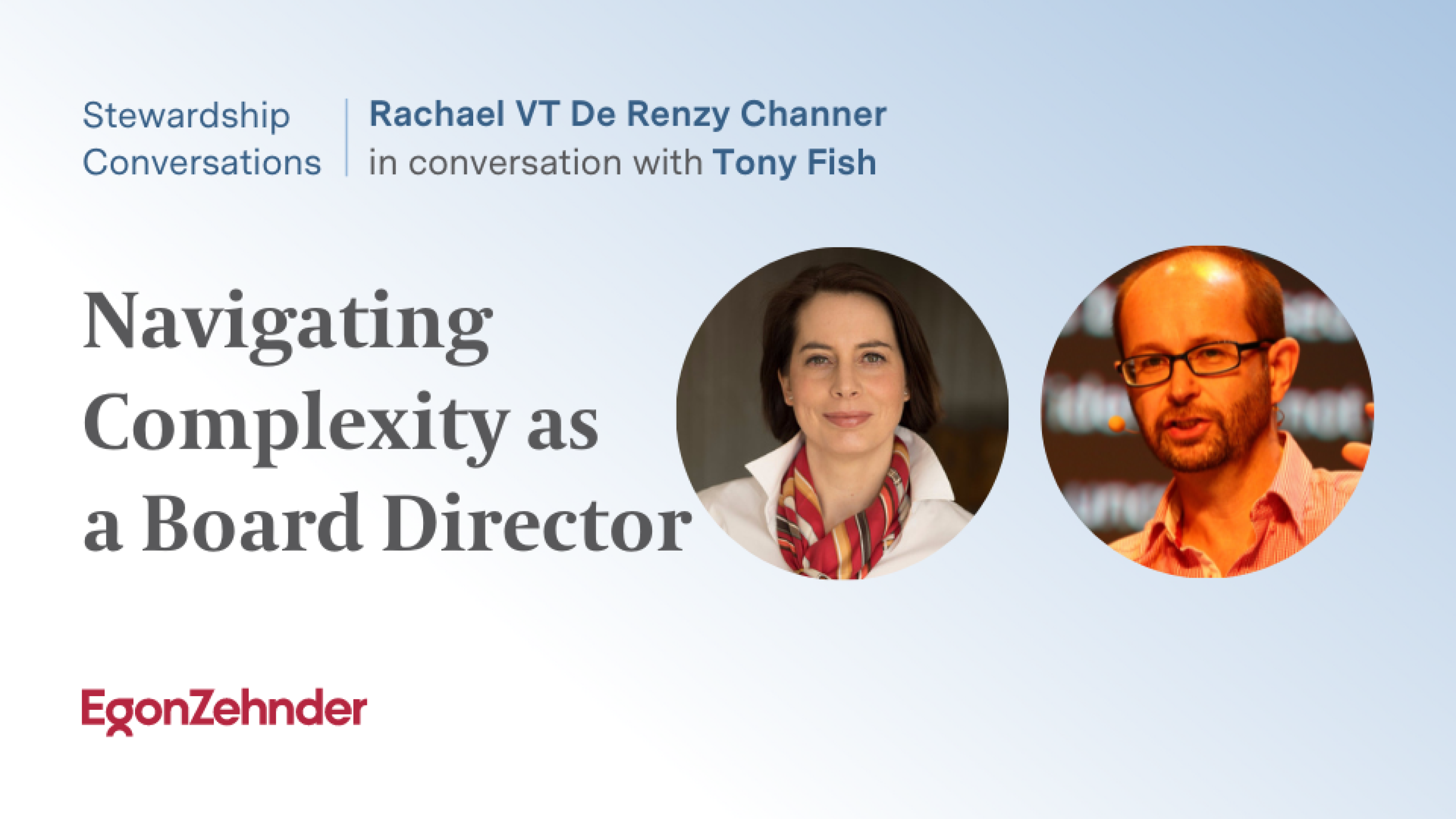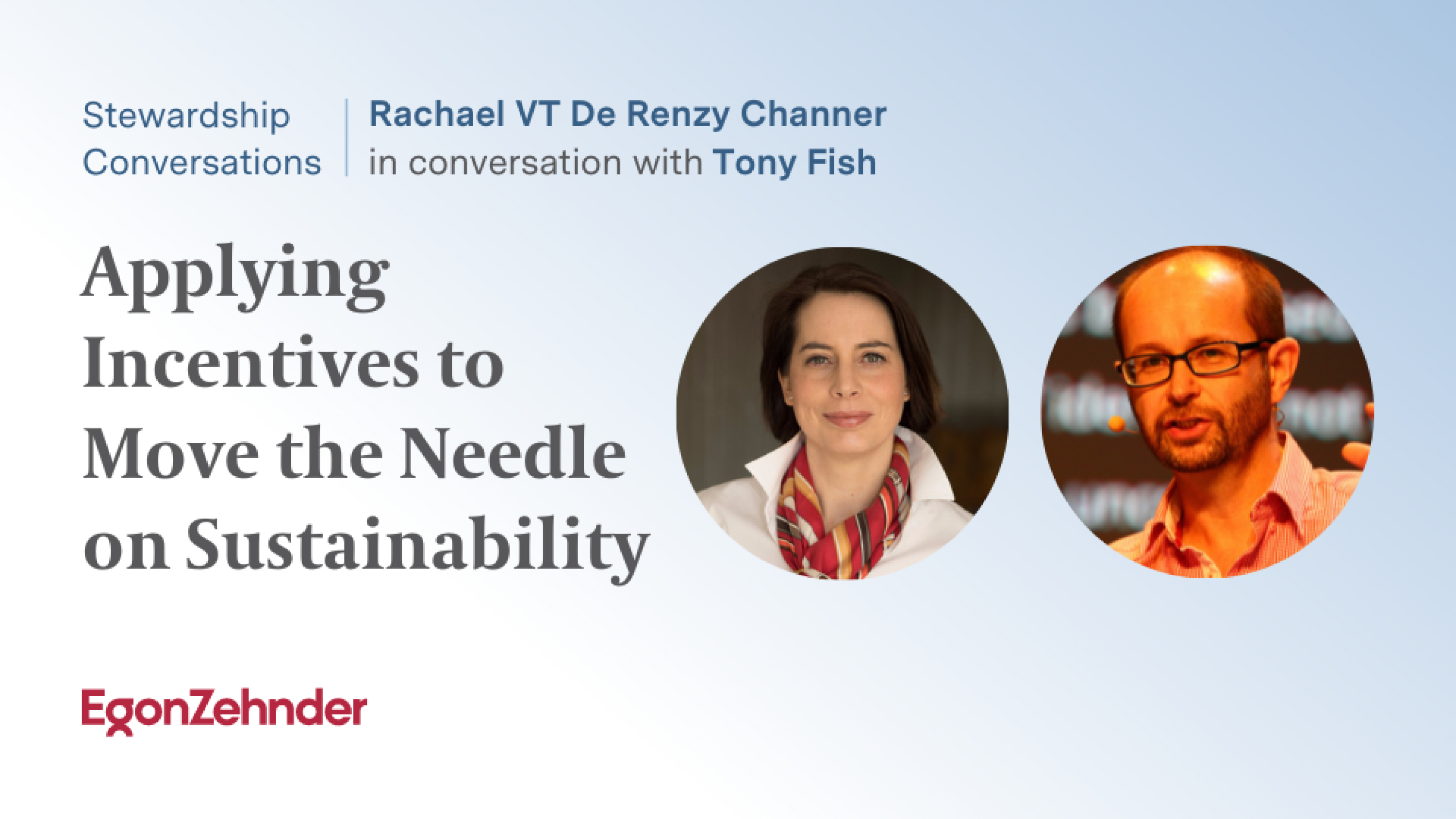Boards are not made the same, and they are heavily shaped by composition, the board chair, the dynamics and how the agenda is crafted. However, they should share a common goal: to embrace varied ways of thinking and foster long-term vision as strategic cornerstones for generations to come. Why? Because doing so widens the realm of possibilities for companies.
In this edition of Stewardship Conversations, I had the pleasure of interviewing Tony Fish, author of “Decision Making In Uncertain Times: How can we become more aware of the consequences of our actions on tomorrow?,” Board Trustee at the Institute of Neurodiversity (ION), and Visiting Fellow at Henley Business School for Entrepreneurship and Innovation. In our conversation, Tony challenges us to rethink board dynamics in two ways: first, by leveraging diverse voices who challenge the status quo of governance, and secondly, by embracing long-term thinking.
What sparked your interest in sustainability?
During a holiday in 1991, I read “Costing the Earth” by Frances Cairncross from cover to cover. She set out a very clear path of the problem that our economics model had, and it was instrumental in my thinking. A year later, my MBA thesis focused on the environment as a board issue—which I failed as I was told the board would never consider the environment an important priority issue. However, one of the courses on the MBA was on sustainability and the environment. Professor Richard Wilford, who ran the course then, stood up and then fought for me. Eventually, I got a begrudging pass from them. Why teach something on MBA if you don't believe it's a board issue?
How do you define your purpose?
As I’ve gone through my career—I've been through a range of different startups and ventures and funds—as you build teams and you lead those teams and work in boards, the value of the board is looking around the room and trying to work out how I can make them a better version of them, how do I ask the right questions? Not just for us as a board, but that person, to help them ask better questions.
Could you share a little bit around your experience as a neurominority person on the board?
The one word I would use is frustrated. Particularly being dyslexic, I see the world completely differently. Therefore, the questions I ask are different than those of a neurotypical individual. My frustration is usually where people can only see the paradigm in which they exist, and they can only work with the paradigm they have, and they reject anything which would take them outside of that.
How can we address the board culture to create space for diverse questions and paradigms?
Much of the culture is shaped by the Chair or CEO. They set the agenda for monthly meetings, which tends to follow a consistent pattern. Finance-related matters take precedence while other topics receive considerably less time. Deviating from this pattern can be discouraging, particularly to minority individuals who strive for difference. This clash of mindsets reflects differing personalities and ways of thinking, and a good board Chair will be able to manage this tension.
As a Board Trustee of the Institute of Neurodiversity (ION), could you talk a bit about how the institute impacts representation of neurodiverse individuals in positions of power?
We currently have three diversity agendas: gender, which began 50 years ago but we feel like progress is still insufficient; race, which we feel like we’re probably 20 years behind on; and neurodiversity, which has just started. We have a very long journey ahead of us, and a lot of people still fundamentally won't accept research around neurominorities. At the same time, many individuals are fearful of declaring themselves as minority. While we've made progress in addressing gender and race diversity, the untouched frontier lies in political or belief diversity. Even boards with gender and race representation may lack true diversity of thought.
Tony, after you having kindly read Egon Zehnder’s first Stewardship Report, what are your thoughts on sustainability and boards?
As the report mentions, I believe there's a foundational set of questions that need addressing regarding sustainability. It's crucial because sustainability, unlike other aspects of business, poses a unique challenge: It's inherently long-term, whereas our actions tend to focus on short-term gains. This tension underscores the complexity we face. To truly address sustainability, we must rethink how we incentivize boards to consider impacts 20 years down the line. Merely optimizing efficiency isn't enough; we need to ensure we're making the right choices ethically and strategically. Until we confront these challenges head-on, we won't fully unlock the path to lasting corporate sustainability.
One of the recommendations from the report focused on challenging mindsets through enhancing diversity of age and gender, which I now find narrow. How could we improve that recommendation for boards?
These are the right steps to start with. If you are a board Chair or CEO, you want to take diversity seriously in your next board meeting. Bring the Head of HR, and consider realigning incentives, remuneration, and bonuses toward longer-term goals. Start by examining the alignment between incentives and your strategic plan. Often, structural barriers—such as negotiating processes tied to bonuses—hinder necessary adjustments. By prioritizing long-term impact, you pave the way for others to follow suit.
How do you think about complexity?
Personally, I find complexity surprisingly straightforward. However, when faced with operational challenges, I become an absolute nightmare. Give me other types of problems and I struggle to handle them—unlike some of my peers. This is precisely why teams and collectives are essential. Now, the issue with complexity arises when we attempt to distil it into a simple linear narrative. Anyone well-versed in complexity will quickly point out that such an oversimplified approach falls short. By accepting only the linear narrative, we risk missing the deeper purpose behind our actions. Unfortunately, this nuanced perspective isn't always prevalent in boardroom environments.
How does being efficient and lean align with the flexibility needed within complexity's guardrails?
Focusing solely on governance without considering company structures is akin to sailing toward the company’s North Star without assessing the vessel where everyone’s on board. We’ve layered complexity onto this analogy, examining the captain, crew, and vessel quality to steer the company. However, we’ve neglected the fishing net trailing behind—the impact on future generations. Efficiency and effectiveness often miss this critical perspective.
How can boards break out of that mindset?
The current approach to drafting board minutes is rigid: meetings are opened, resolutions are read, voted upon, votes tallied, and then adjourned—all without recording discussions or debates, due to public scrutiny and compliance requirements. This checkbox mentality feels inadequate. I suggest a shift to documenting the questions the board raises. If crucial questions are not asked, it could signal issues under Section 172 of the Companies Act, where directors are expected to fulfill their fiduciary duties by being knowledgeable and proactive. If the board does ask these necessary questions, it demonstrates diligence and adherence to responsibilities, making criticism unwarranted.
Last time we spoke, we discussed the concepts of “the known, the unknown, the things we don’t want to know, and the unimagined” from your book. Could talk about it?
In most of our board meetings, we end up with two conversations happening: the said and the unsaid.
- In the said, we have two sets of conversations. The first conversation is the things that draw to our experiences. We all play to the experience we have and the things that make us look good and help us feel like we’ve added value. The second part of the said is the things we know we have to do: regulatory policy, compliance, oversight, reporting, audit. Every board has that tension which comes along.
-
Then we have the unsaid, which equally falls into two aspects. The first part of the unsaid is those things that the board chair or the CEO or the finance director don’t want you to talk about for political reasons, for motivational reasons, for reasons which might become apparent at some point in time, because they’re too hard and difficult. We have a bunch of unsaid and usually conflicts, personalities. There’s a whole load of stuff which remains unsaid and sometimes assumed. The most interesting category is the unsaid because it’s the unknown. It’s the unimagined. We don’t know what questions to ask because we lack experience. So we need to find a way to take these unimagined things imagined. Turning this complexity into a linear narrative so we can talk about it in a fair equal value without, the CTO trying to belittle you that you don’t know anything or the CIO saying you know nothing about that or the CISO trying to create risks that nobody wants to talk and all the finance guys, for example. We’re good at starting conversations then to dwell. We’re very into this thing. You’ve got to have the answer. It’s like, do you know what, this question could be our agenda for a year.
Tony’s call to action for more inclusivity and better questioning and open dialogue encourages boards to confront the unspoken, venture into uncharted territory, and adopt a transformative approach—one that transcends conventional dialogues. By encouraging different thinking and embracing diverse perspectives, boards can drive substantial change and redefine their impact.








